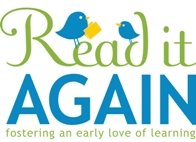The Role of Rhyme in Learning to Read
In the ever-evolving landscape of early childhood education, one timeless element seems to be fading into the background: rhyme. Rhyming has long been a crucial component of early literacy development, aiding pre-readers in honing essential skills. However, as modern educational approaches shift, we find ourselves straying from traditional methods such as nursery rhymes. In this post, we explore the significance of rhyme for pre-readers and reflect on how you might integrate this melodic tool into your child’s journey to eventually become a reader.
The Importance of Rhyme
Phonological Awareness Development
Rhyming plays a pivotal role in developing phonological awareness, the ability to recognize and manipulate the sounds of spoken language. When children engage with rhymes, they become attuned to the rhythmic patterns of words, enhancing their ability to identify and produce similar sounds. This skill lays the foundation for successful reading and spelling later on.
Vocabulary Expansion
Nursery rhymes, with their playful language and repetitive structures, expose pre-readers to a rich vocabulary. The familiarity of rhymes helps children understand the meaning of words in context, fostering language acquisition and comprehension.
Memory Enhancement
Rhymes often follow predictable patterns, making them easier for young minds to memorize. This memorization process not only enhances cognitive abilities but also strengthens the neural connections necessary for more advanced literacy skills.
A Shift Away from Traditional Methods
In recent years, there has been a noticeable departure from traditional practices like nursery rhymes in early childhood. Modern technology, the rise of digital platforms, and an increased focus on academic rigor have contributed to this shift. As a result, the holistic benefits of rhyming are all too often overlooked in favor of more "advanced" learning methods.
Digital Distractions
With the proliferation of screens and interactive devices, children are often exposed to digital content that may not prioritize rhyme. While technology can be a valuable educational tool, it's crucial to strike a balance and ensure that foundational elements like rhyming are not neglected.
Academic Pressure
The push for early academic success has led to a more structured and goal-oriented approach to early education. In the pursuit of achieving specific learning outcomes, the enchanting world of nursery rhymes and the joy they bring is often sidelined.
Rediscovering the Joy of Rhyme
Rhyme at Home
Introduce rhyming activities into daily activities around the house. Make it up as you go… “Hey look, I’m about to cook” . If you start the practice before long your child is going to join in. The sillier the better! “Mom, there’s a rat on my bat that’s afraid of the cat”.Simple games, rhyming books, and interactive activities can make learning enjoyable while promoting essential literacy skills.
Infusing storytelling and song with rhyme can make the learning process more engaging. Whether through classic nursery rhymes or newly crafted rhyming tales, children can benefit from the rhythm and melody that accompany these age-old traditions. Our favorite Nursery Rhyme book is an “oldie but goodie”... see what I did there?
Interactive Learning:
Using technology isn’t taboo. Use is thoughtfully and in small doses. These tools can complement traditional methods, providing a balance between digital and hands-on learning experiences. Here’s a list of interactive apps and games that focus on rhyme:
An Additional Resource
Anna at theimaginationtree.com has written a great deal about the importance of rhyme and she’s even provided a few great hands-on, easy to pull together ideas you can incorporate as you begin exposing your child to the idea of rhyme. To start with, she’s collected a list of over 50 great rhyming stories for preschoolers that can be reached by clicking HERE. There are easily 20 ideas on her site, but my favorite, by far, is the “rhyme basket”. Walk around the house, scour the toy chest and put together a collection of small objects that rhyme. Identify each object together and then challenge your child to pick out the objects as pairs of rhyming words.
With younger children you might want to start with only three or four pairs and increase as your child becomes more familiar with the concept.
As we navigate the ever-evolving landscape of early childhood, it is important to recognize and preserve the timeless value of rhyme. Beyond its role in phonological development, rhyme brings joy, creativity, and a sense of rhythm to the learning journey. By striking a balance between modern educational approaches and traditional methods, you ensure that pre-readers embark on their literacy adventure with a melody of words guiding their way.




